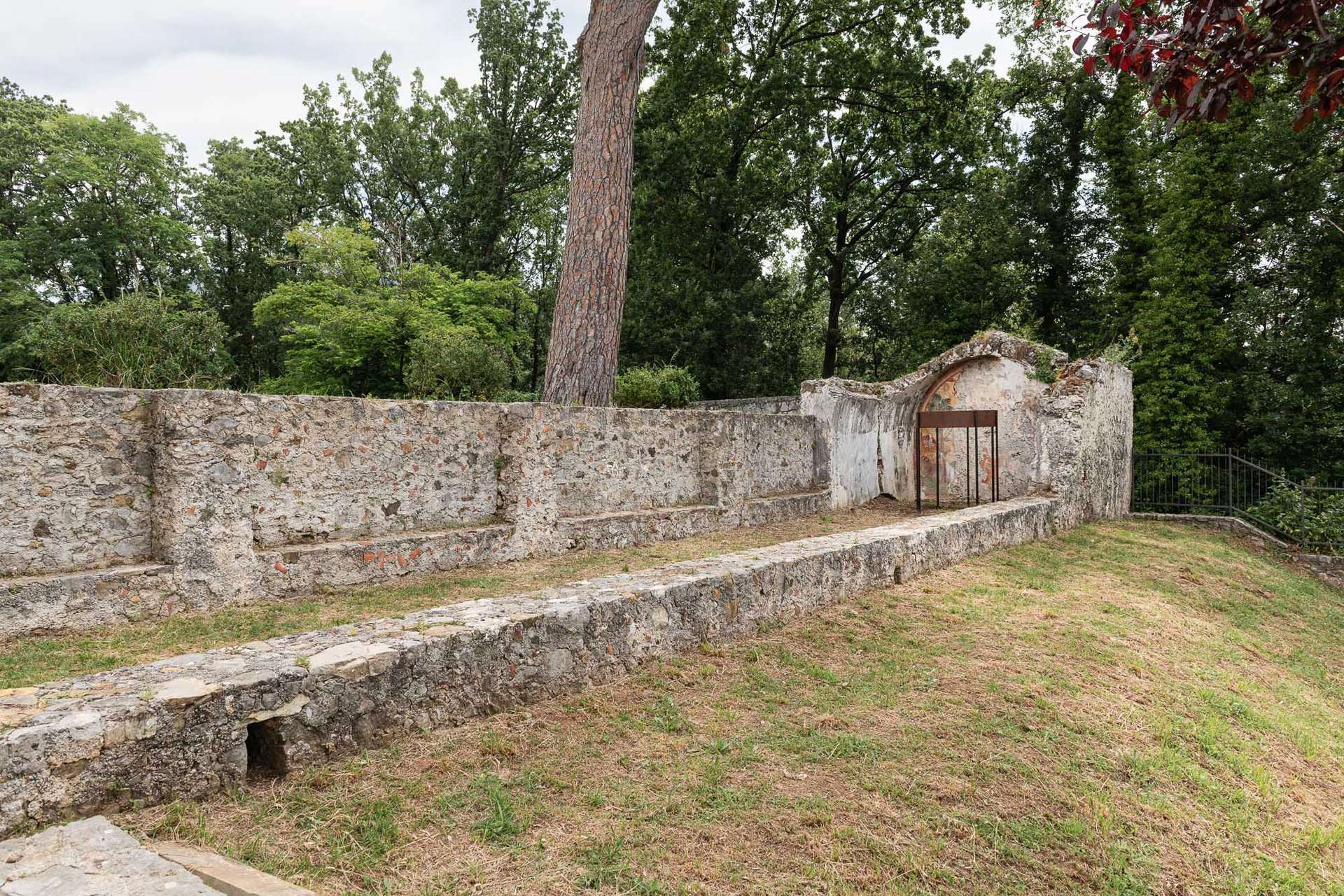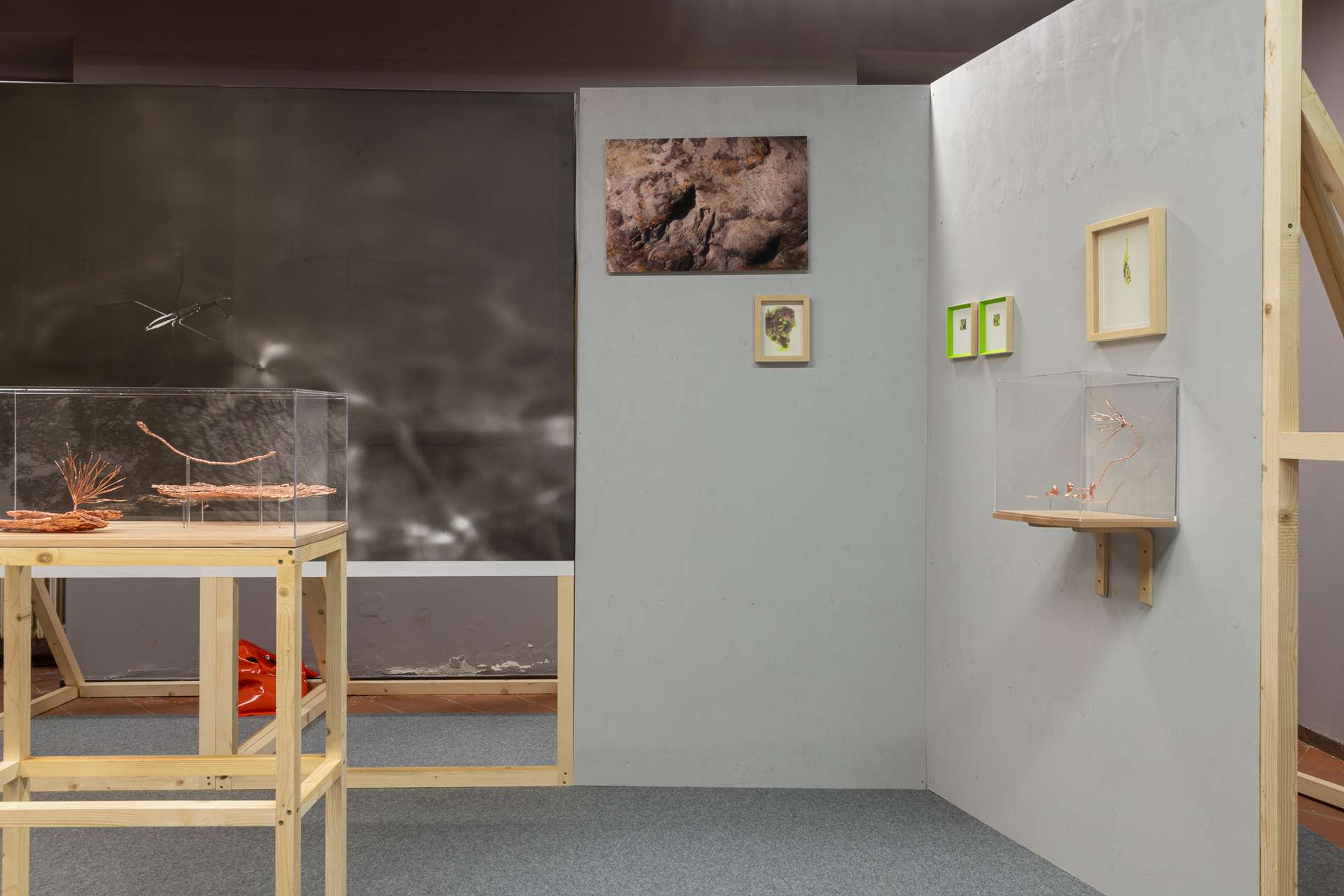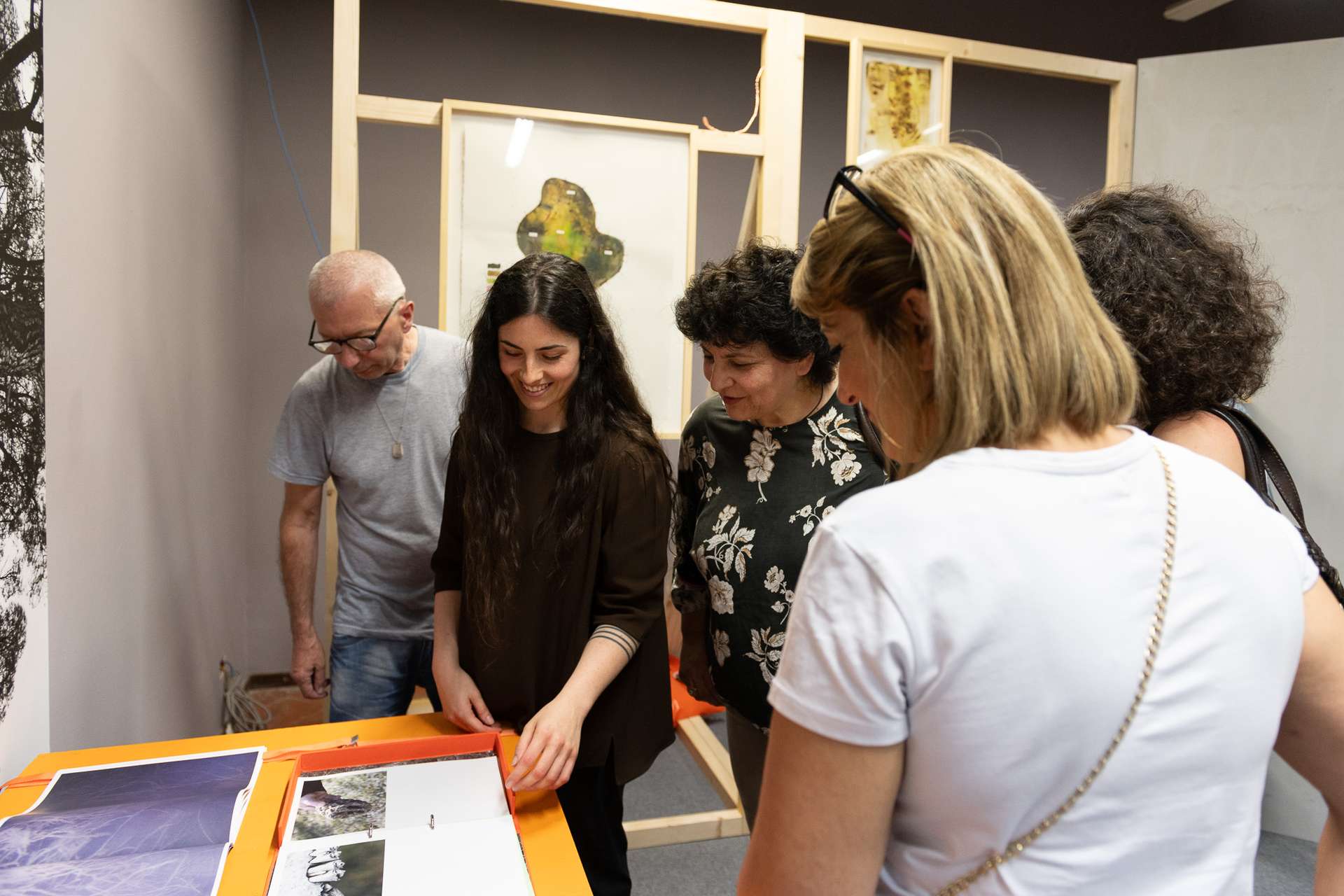Me ne andrei nella roccia della Lieta [Mə n’ànnərrìjə ‘ndà rocchə da Ljèta], a dialect expression that means “I would like to go away to somewhere peaceful”, is the title that artist Arianna Pace has chosen for her project in Rivello.
“Lieta” remains an indecipherable place, an imaginary refuge in which to rediscover a lost peace – or perhaps a place that once really existed – in order to get away from social life, back to an isolated nature.
Yet, looking at the Rivello landscape, the frontiers between urban and wild dimensions are broken down by their collaboration: there is no wilderness without civilisation, and vice versa, even where human action has been voluntarily less gentle.
The Valle del Noce, visible from Rivello and the neighbouring municipalities, is a continuous creation by the river Noce, a subjective element that moves and brings human archaeologies to the surface, amongst ancient bridges, abandoned forests and vegetable gardens, old salt roads and contemporary waste. This is where the work made in corten steel is located, denoted Chjumma acutta, no passà ca ta njegha. Chjumma ca camina, passa ca nu nda njeghe [Silent river, do not pass, you will drown. Walking river, pass you won't drown], a local Rivello saying that evokes the ancient attitude of not separating human activities from nature. The fear of this silent presence becomes the fear of a dried-up river, now a warning on climate change.
Behind the Monastery of St. Antonio, the monumental stone pine, the largest in Basilicata, is "identified" by the artist as an alterity rooted in the community, a witness to almost two centuries of village life.
Right under the pine tree, the remains of a chapel host the einfühlung sculpture, which, almost as if to form an apsidal space, invites the interpretation of the pine bark casts, in a new repositioning with the tree.
Interrogating this landscape takes the form of a landscape archive that the artist constructs in an interior space of the Monastery, as an open display of the study and analysis of her impermanent presence in the village.
ㅤ
ㅤ
Permanent works:
Arianna Pace, Senza titolo, 2023, calligraphic writing, laser cut on corten steel, iron. 87 x 150 x 5 cm circa.
Contrada Verneto, Rivello (PZ)
Not easily accessible to people with disabilities.
ㅤ
ㅤ
Exhibited works:
01. Arianna Pace, einfühlung, 2023, iron, terracotta, 177 x 136 x 136 cm.
Behind to the Monastero di Sant’Antonio, Rivello (PZ).
02. Arianna Pace, landscape archive, 2023, installation, mixed media, variable dimensions.
Courtyard's Monastery of Sant’Antonio, Rivello (PZ).
ㅤ
I THINK OF THE ‘ROCK OF LIETA’ AS SOMEONE OR SOMETHING WITH WHOM WE EXPERIENCE AN AUTHENTIC ENCOUNTER, WHERE IT IS POSSIBLE TO FEEL WITH THE HEART, LISTEN WITH THE EYES AND TAKE CARE. THUS WE ACT IN THE LINE OF THE ESSENTIAL, WE UNVEIL THROUGH THE ACT OF DOING, WE MAKE MEMORY TO RESPECT IDENTITY
Arianna Pace was born in Pesaro in 1995, where she lives and works. In 2020 she obtained a second level diploma in Contemporary Painting at the Academy of Fine Arts in Urbino. Important for her training was her 2018 participation in the Erasmus programme in Belgium, where her research acquired an international dimension and focused her attention on themes related to ecology. She has taken part in several artistic residencies in Italy, including Falía in Lozio (Valle Camonica, BS), Loam in Monte Ginezzo (Cortona, AR) and MAC (PD). Her exhibitions include: SOPRANNATURALE | cŏrpus et anĭmus, Condominio - Red Lab Gallery (MI); Baleno, SpazioVolta (BG); Incroci, Casa Sponge (Pergola, PU); Soffermarsi, SOTTOFONDOSTUDIO (AR). She was involved in the WHEREWHEREWHERE project, Argimusco (ME), and Progetto Vicinanze. Her awards and prizes include the “Surprize” special mention for experimentation, Centro Arti Visive Pescheria (Pesaro, PU); Premio Nazionale delle Arti - PNA (TO); finalists exhibition prize at the Rea! Art Fair (MI); first prize at YAG/garage (PE); and the BigCi Environmental Awards, Australia.
IS A WIDESPREAD INTERVENTION IN THE VILLAGE THAT TAKES ITS CUE FROM A REFLECTION ON THE LOCAL LANDSCAPE AND ON THE MONUMENTAL DOMESTIC PINE, THE LARGEST IN BASILICATA, A PARTICIPANT IN THE LIFE OF THE VILLAGE FOR ALMOST TWO CENTURIES
Situated in the Lucano Val D'Agri Lagonegrese Apennine National Park, dominated by the Sirino and Coccovello mountains, Rivello is set in the midst of nature, at a location where the Noce river flows and has carved a canyon in the rock over the centuries. Today it has about 2,500 inhabitants.
The village was built between the 6th and 8th centuries B.C. opposite the original settlement dating back to the 6th century B.C. Occupied by the Velini and the Longobards in the upper part of the village, and by the Byzantines in about the year 1000 in the lower part, over the centuries Rivello developed into two separate centres with different cultures, customs, traditions and religions. The first followed Latin rites in the church of San Nicola, the second adhered to Greek ritual at the church of Santa Maria del Poggio. The historic centre is a network of alleys, flights of steps and small pedestrian tunnels, and the many religious buildings like the Monastery of St Anthony of Padua dating back to 1512. A fiefdom of the Sanseverino, Ravaschiero and Pinelli families, Rivello regained its freedom in 1719 for 55,000 ducats and to ‘Cantare quattro di salami di ogni bontà, così come si fanno in detta terra di Rivello’ (sing of four kinds of salami of all the finest types, as they are made in said land of Rivello). Highlights of the local cuisine include soperzata, a cured pork meat with a fragrant, slightly spicy aroma, home-made pasta and polenta (steamed cornmeal) with termini (pork sausage), and ghiummariell (pasta envelopes stuffed with lamb or kid offal, cheese, parsley, garlic and black pepper). An ancient tradition in the village is copper craftsmanship, in addition to goldsmiths and silversmiths.













